Among the many varieties of Clematis various forms and shades, the hidden place in the gardeners occupy terry large-flowered varieties. Beautiful curly lianas with large lush flowers from a set of petals conquer at first sight. The characteristic feature of terry clematis is early and continuous abundant flowering throughout the summer. One of the charming hybrid varieties with lush snow-white flowers, which is often used in landscape design, is Clematis Large-flowered Isago. On the features of landing, care, as well as secrets of growing this variety, read further.
Clematis Isago: variety description
Clematis ISAGO was led in 1991 in Japan. This is a decorative early large-flowered hybrid variety of Japanese selection with terry white flowers. Japanese Clematis is characterized by special refinement and sophistication, which is characteristic of the country of the rising sun.
Botanical features of Clematis Isago
- Clematis Isago is a perennial shrub with moderate growth. Curly shoots are stretched from 2.5 to 3 meters in height, laid support.
- Flowers are very decorative and attractive attractive varieties: large, with snow-white petals. In the center of the flower there are bright yellow stamens that look contrast against the background of petals. Flower diameter from 10 to 13 cm.
- The characteristic feature of the Japanese terry Clematis is the formation of two types of flowers. The semi-world flowers consisting of 12-15 petals are formed on shoots of the current year, and lush terry inflorescences are blown up on last year's Liana branches.
- The flowering of snow-white Liana is not only long, but also abundant. From May to June, the first wave of flowering comes, and the second in July-August and continues until September.
- Clematis Isago refers to the second group of pruning (weak).
- Liana densely flies with a support, tightly paved with long leafy stiffs. The variety is ideal for decorating and gardening gazebo, corners of the garden. Gentle terry buds are especially attractive against the background of a dark background of household buildings, fence, walls of the building. Often, trees or shrubs are used as support.
- Frost-resistant grade that perfectly transfers winter in regions with temperate climates.
Clematis Isago: landing features
The cultivation of large-flowered hybrid varieties should be approached. In order for a beautiful plant to decorate a household plot for many years, you need to take care of the right place for planting a seedling.
How to choose Clematis Isago seedlings
As a rule, the seedlings of terry large-flowered varieties are quite expensive. They can be purchased in nurseries or via the Internet. Choosing a plant for breeding in the garden, you need to pay attention to such signs of planting material:
- Choosing between Clematis grown in containers and seedlings with an open root system, it is worth preferring the planting material with a closed root system. Container plants that plant along with an earthen room, faster and better fit in a new place. The process of adaptation for Clematis will be less traumatic.
- The optimal age for a seedling in the container is 2 years. Sat plant can be in spring or autumn.
- If the purchased seedlock has an open root system, inspect the root. It should have a healthy look, be elastic, without damage and explicit signs of diseases: swollen, dark spots.
- Clematis sapling should have at least 3 healthy kidney shoots.
Place for landing Clematis Isago
- Clematis - Sun-tee culture that grows remarkably in bright, illuminated garden corners.
The optimal location of the blooming Liana will be the south-eastern and southwest part of the household site. Moderate shading is also allowed. - It is not recommended to plant a seedling in the shade. Large-flowered grade will lose its decorativeness, as the plant will not be able to develop normally. The flowering of Clematis in the shade will be weak, and the flowers are small.
- For the plant it is important to choose a place where there will be no strong wind, a draft that can damage the shoots and flowers.
- If it was decided to plant a shrub near the wall of the house, buildings, then you need to remember that the distance between them should be at least 70 cm. Since there is a danger of oveurgement of soil with rainwater and melting snow from the roofs. Clematis does not carry out moisture stagnation in the ground.
- In addition to overwhelming, it is impossible to overheat the root system of the Liana. To protect the root in the root zone of the shrub, low flowers and plants are planted, which will protect it from scorching sunlight. Near Clematis, you can land a calendula, velvets, which will also scare from the blooming lianas of pests.
- The curly closures of Clematis, which over time stretches up to 3 meters in height, need a good support. Flexible shoots are used for vertical landscaping. Without support, Clematis Isago will lose its attractiveness and will not be able to fully develop. Clematis can be planted along the fence, lattice, shackle the arch, decorate the gazebo. As a support for Liana, you can use any techniques: metal and plastic pipes, wooden rails, a grid. The main condition so that the support is strong and was able to withstand a massive shrub with large inflorescences.
Soil for Clematis Isago
The soil for the cultivation of large-flowered varieties of Clematis should be in moderation of nutritious, loose, neutral or weak acidity. In an acid, heavy ground clematis will not grow. A good drainage is also needed and the lack of moisture stagnation in the ground.
Clematis Isago: landing
Landing Clematis Sapliatis Isago is carried out in spring or early autumn. The landing pit is preparing in advance:
- The landing hole should be quite spacious and correspond to the size of an earthen coma that will be placed in it.
- At the bottom of the pit lay a layer of drainage. Experienced gardeners are recommended to use perlite, vermiculite, and quartz sand is suitable.
- It should be remembered that Clematis do not fit in crude and saline soil. To neutralize such a soil, a hawed lime is used or 200 g of chalk, which fall asleep into the landing pit over the drainage layer.
- If a heavy primer prevails on the site, it is brought into it: humid, peat and sand (2: 1: 1) and 400 grams of ash and 100-120 grams of superphosphate in granules are added.
The process of planting a seedling in the ground:
- Near the prepared pit establishes support. If planting plants are planned near a building or structure, it is necessary to abide by the distance between the bush and the deaf wall (less than 70 cm), in order to prevent the root radiating from water flowing from the roof.
- From the planting mixture, a holmik is formed and the Clematis root in it is.
- Saplings with a closed system are placed in a hole along with a closer land so as not to fall asleep the root neck.
- After planting, the seedling is abundantly watered, and the rolling circle is mounted to preserve the necessary level of humidity in the ground and prevent overheating.
Care for Clematis Isago
Clematis care includes the following activities:
- Watering. The plant loves regular watering, once a week. It is important to not allow drying and cutting the soil. In the heat, irrigation should be abundant, the amount of watering is increased by 2-3 times. Watering better in the morning or in the evening, avoiding moisture from entering the leaves and buds of the plant. The lack of moisture affects the size and decorativeness of flowers. They lose their attractiveness, become smaller, and in time dry out.
- Mulching. Overheating of the soil is destroyed for the moisture-loving plant, so it is important to protect the roots of Clematis from the scorching sun. To do this, mulch the soil. As a mulch, the bark of trees or other natural materials are used.
- Podrel. Feels Clematis in the period of active growth of green mass, using nitrogen fertilizers. It stimulates the growth and development of plants shoots. The second feeding is carried out during the period of bootonization by potash and phosphoric fertilizers.
Clematis Isago 2nd group trimming
Clematis Isago refers to a weak, 2nd group of trimming. This group includes large-flowered hybrids blooming at the beginning of summer on the shoots of last year. Without regular trimming branches of the bush thicken, the bush becomes non-dimensional, and the flowers lose decorativeness and terrace. With properly completed trimming, you can achieve the development of new, powerful shoots and abundant blossoms of shrub.
The trimming is carried out in early spring, when the kidneys begin to swell, but they still do not start their height. It is necessary to cut everything that is above the extreme "alive" kidney. At the base, it is necessary to leave a length of 1-1.5 meters long. The shorter of the trimming of escape, the less new shoots will go into growth. The plant will give all the strength on abundant flowering with snow-white large flowers. However, the trimming is subject to not all shoots, but only those that grow inside the bush. Weak and injured branches can be deleted completely.
The autumn trimming of the Clematis of the 2nd group is to trim the weak shoots by a third of their lengths, as well as the removal of the shields after the first wave of flowering. Also, the bush is subject to sanitary trim from broken branches and those shoots that began their height inside the bush.
Zimovka Clematis Isago
Clematis Japanese breeding relate to frost-resistant varieties, but require careful preparation for the winter, which lies in the competent trimming of the bush and good shelter. Clematis Isago is covered as roses when the first frosts occur. The base of the bush is insulated with a noodle, a vine, lowered from the support, and is covered with polyethylene film or other concerned material. In the spring, when the threat of frosts, the film is removed to prevent spontaneousness.
Diseases and pests Clematis Isago
The most common problem in the cultivation of Clematis is the development of fungal diseases due to non-compliance with the rules of plant care. Most often they are subject to such diseases as:
- Rust - leads to fading of the leaves on which spots and rusty flaps appear. Over time, foliage dries out and falls, and Liana slows down his height. To combat rust, the spraying of the bush of Bordeaux liquid is widely used.
- Puffy dew - A fungal disease for which the coverage of shoots and leaves is characterized by a white bloom. Infected shoots are subject to trimming and destruction. A bush is treated with fungicides.
- Wilt - Cooked and dangerous for the plant disease at which a sudden fading of the plant occurs. Most often develops in hot weather. The infected bush is subject to destruction, while the soil must be disinfected using Fundazola.
Among the pests attacking on Liana, you can highlight TRU and web ticks. To combat pests, gardeners recommend using universal insecticides.
How to propagate Clematis Isago
Large-flowered clematics multiply the vegetative method: the division of the bush, grooves and stalling.
- Method of dividing bush It is used for adult bushes from 5 to 7 years. For young clematics, this method is not suitable, since their rhizome is not strong enough. The division of the bush is carried out in the spring, until the kidney or in the fall after trimming. The bush is digging with an earthen room and divide the root on the part. Each defense must be attended by strong kidneys. Dellets are immediately ready for a transplant to a new place. For stimulation of growth, before planting, the roots are placed in the root solution.
- Reproduction with chains Apply in spring. To do this, choose a young escape and put it in a prepared groove, a depth of 10 cm. Enchant the escape with the help of a bracket and sprinkle the earth. In the fall, the rooted escape is separated from the maternal and transplant to a new place.
- Shining - It is the easiest method of breeding Clematis. It is conducted before the start of flowering. Choose cuttings from the middle part of the escape, making the lower oblique incision at a distance of 4-6 cm from the node, the upper slice is smooth. The cuttings are treated with a solution of rowing growth stimulants. For the landing of the cuttings, you need to prepare a container with a peat and sand mixture in which a stalk is plugged. To roighten the cutlets, you need to create a greenhouse - to cover with a film or a plastic bottle with a cropped neck. The cutting should be daily water and ventilated. In the fall of the next year, the seedlings are ready for landing.
Secrets of growing terry Clematis Isago
- After planting a seedling in the first years, it is not worth waiting for the buoy flowering of Clematis. During this period, the root system and root shoots are increasing.
- In order for the plant successfully overlook, it is worth avoiding the accumulation of a large amount of water from the roots.
- The young shoots of Clematis Isago look powerfully, but they are quite fragile. It should be carefully fixed to the support, directing the desired location of escape with vertical landscaping.
- Clematis Isago refers to an early light-affiliated variety, so do not place seedlings in the shade. The plant will lose its decorative qualities and will not bloom abundantly.
Clematis Isago: reviews
- Valentine: Among the huge variety of colors in my garden, the brightest and charming are Clematis. Especially precisely attach to terry varieties. My pet is a snow-white handsome Clematis Isago. Every year he only good, blooms twice a year incredibly beautiful flowers with delicate white petals. In the fall, during the second flowering, the flowers are simple, but not less delightful!
- Vladimir: I have long been engaged in the cultivation of Japanese Clematis, I can not say that they are especially demanding of care. It blooms chic, 7 large flowers on each branch. The shoots are powerful, but fragile, you need to ensure that heavy buds do not break the vine. Need a reliable support.
Clematis with terry flowers are the perfect way to decorate the gazebo, a veranda or other corner of the garden, fill it with magic and charm.

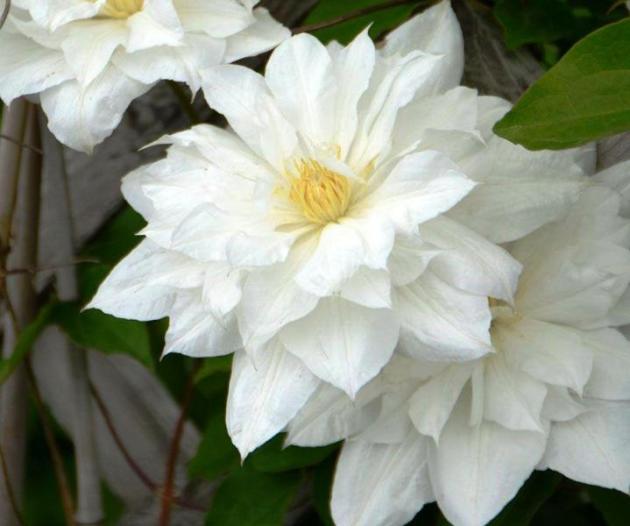
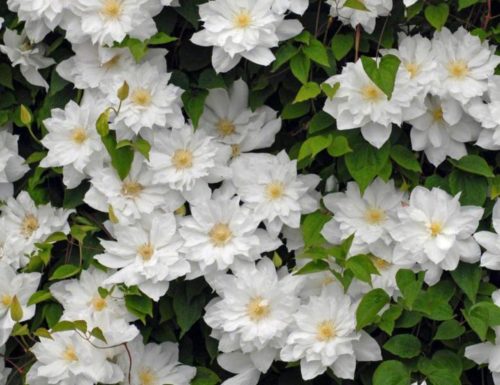


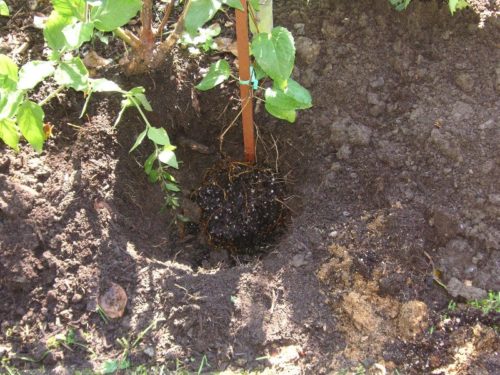
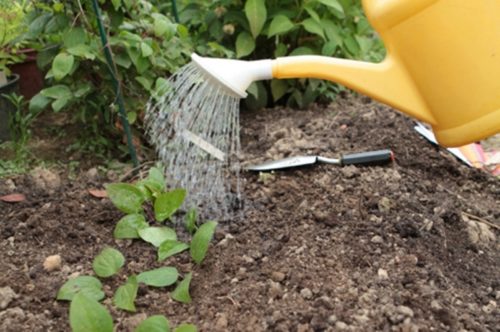


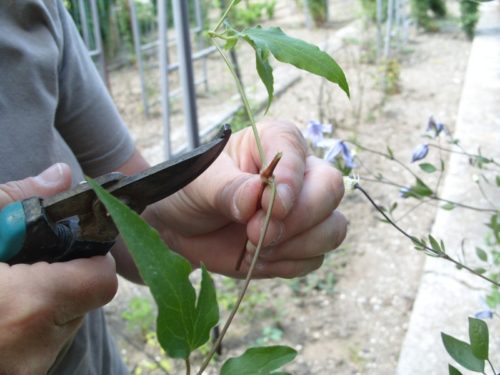
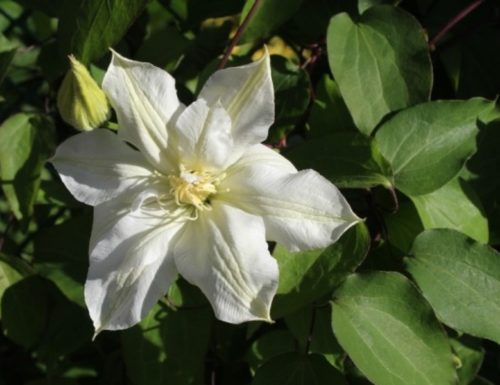
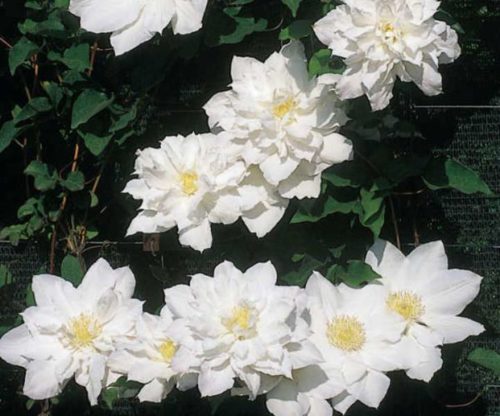
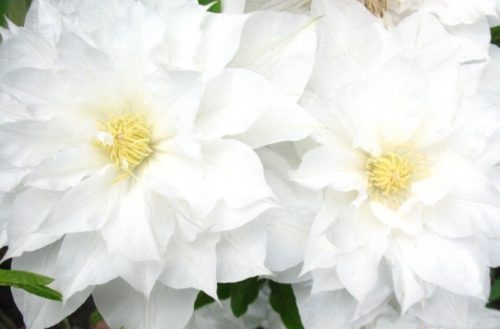
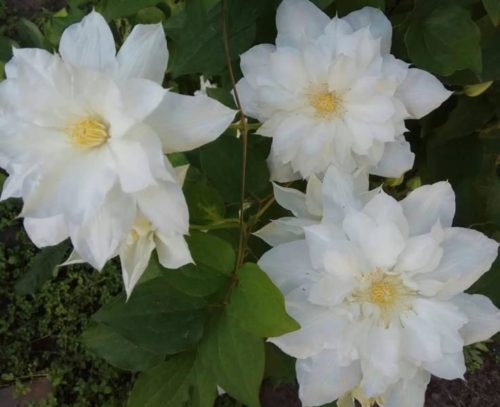

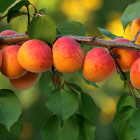


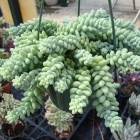
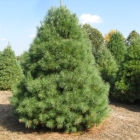

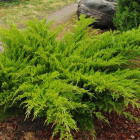

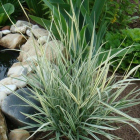
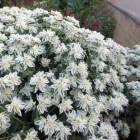


 Start a discussion ...
Start a discussion ...